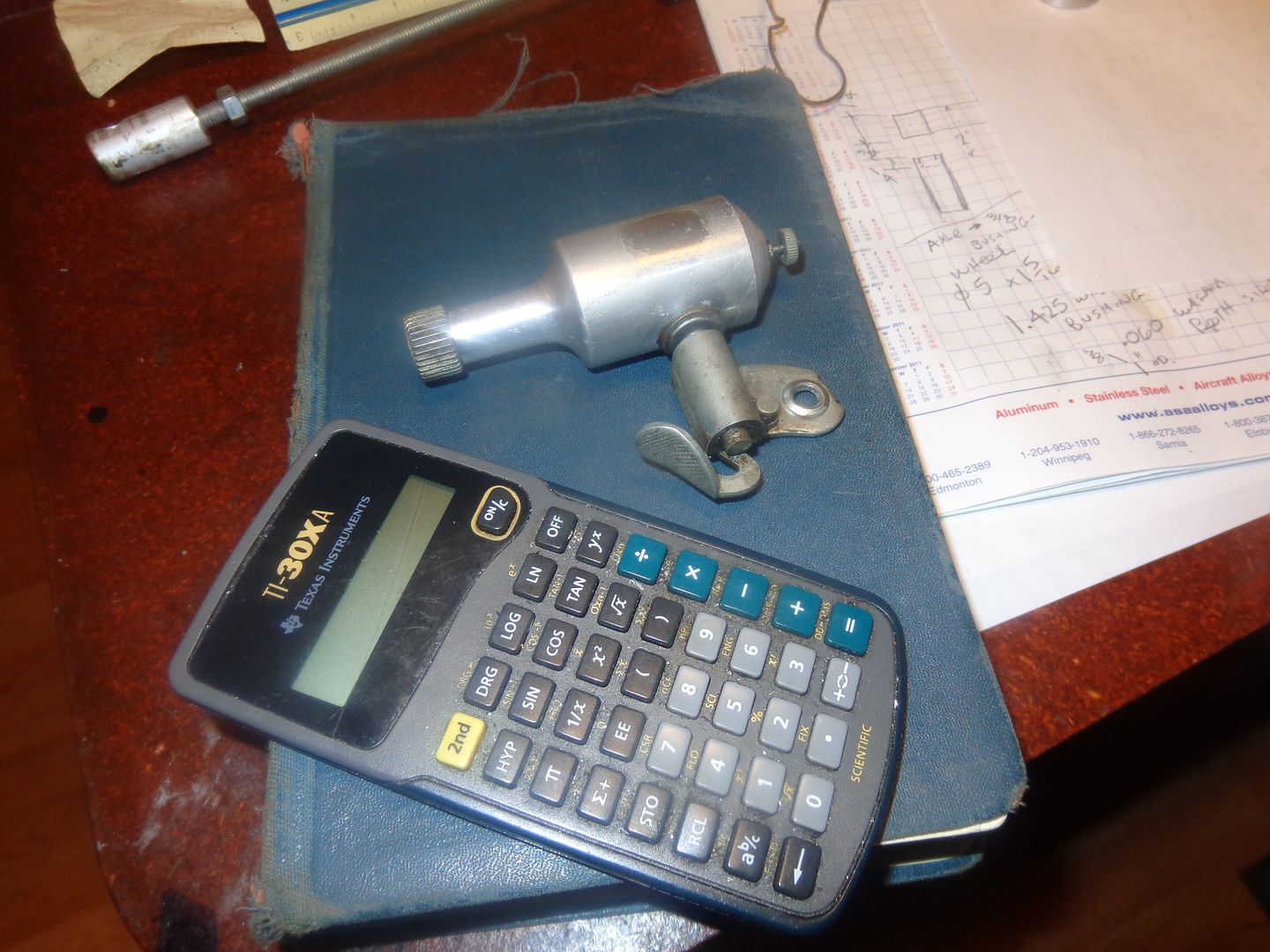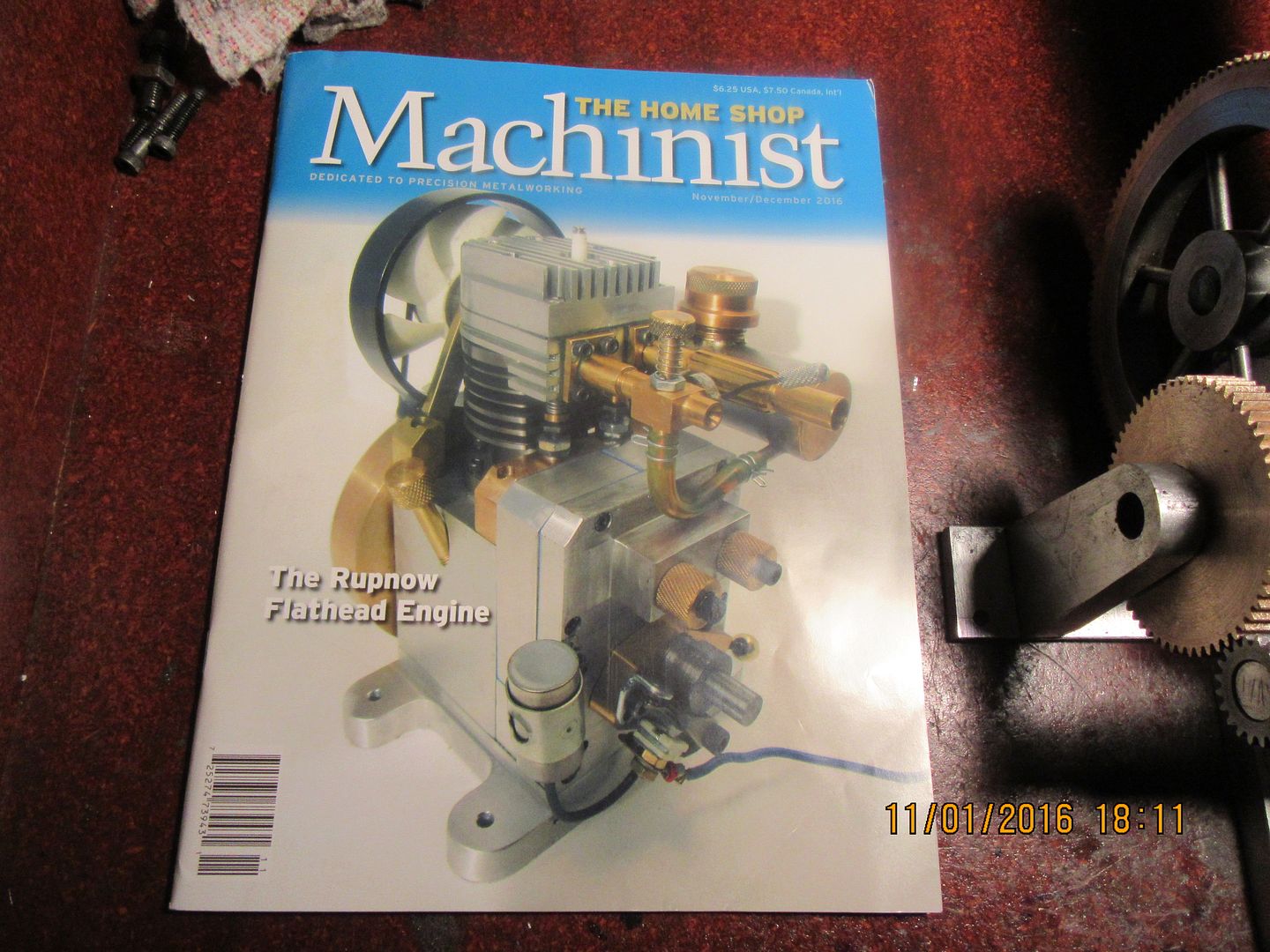Hooray for my side!!! Just as I was about to go bonkers from terminal boredom, I got a call ten minutes ago for some design engineering work starting tomorrow. I have been thinking about using my new engine to run a lighting plant, using an old bicycle generator, the kind with the friction wheel that ran off the front or rear tire. Dearie me!!!---Time has moved on in the last 55 years since I had a bicycle. I went into 3 bike shops and Canadian tire asking about generators for bicycles, and they all looked at me as if I had two heads. Apparently now, if you want a light on your bicycle, you use batteries and LED's. I see many of these generators (also called dynamos) on ebay but I don't totally trust buying used electrical things from people I don't know in places I have never been to. I will pursue this a bit more though, because I would like to have my new engine power something.---Brian
You are using an out of date browser. It may not display this or other websites correctly.
You should upgrade or use an alternative browser.
You should upgrade or use an alternative browser.
A new engine for fall---
- Thread starter Brian Rupnow
- Start date

Help Support Home Model Engine Machinist Forum:
This site may earn a commission from merchant affiliate
links, including eBay, Amazon, and others.
Cogsy
Well-Known Member
I get excited when you get bored Brian - never know what contraption you're going to come up with! Seriously though, one day I would like to build the Rupnow V8 
canadianhorsepower
Well-Known Member
- Joined
- Oct 22, 2011
- Messages
- 1,671
- Reaction score
- 324
, using an old bicycle generator, the kind with the friction wheel that ran off the front or rear tire.
Brian
Brian just go to Princess Auto and get a small DC motor
and spin it with your motor and you have a Dynamo
A very kind gentleman from Michigan who built my Muley style Sawmill and exhibits it at shows around USA has just "volunteered" me a bicycle generator. It will be sent here by snail mail (I assume) and then we will go about building a "lighting plant" for my newest engine to run.---Brian
- Joined
- Dec 31, 2010
- Messages
- 777
- Reaction score
- 195
Hi Brian:
If you have an old Stepper motor around they make really good generators. Multiple outputs too which you can join together with diodes or use separately. Lots of them cheap at Princess Auto or Active Surplus. Lots of different sizes to suit as well. Then doll it up with a casing to like a vintage generator.
Sage
If you have an old Stepper motor around they make really good generators. Multiple outputs too which you can join together with diodes or use separately. Lots of them cheap at Princess Auto or Active Surplus. Lots of different sizes to suit as well. Then doll it up with a casing to like a vintage generator.
Sage
Perhaps a bicycle dynamo requires more energy than a small engine puts out, or perhaps it's just that I have bad google-foo. I have done numerous web searches looking for a bicycle dynamo driven by a small engine to make a "lighting plant", but there really is very little out there showing others doing it successfully. I did find one video of somebody with a Namod steam engine hooked to one, and he was getting voltage across a Voltmeter, but not actually running anything. My latest engine with a 1" bore seems to have considerably more power than any of my model steam engines. It hits it's power band at about 1500 rpm, and my home grown math tells me that the bike dynamo's like to spin at around 3000 to be quite efficient in terms of lighting a bright white light. It will be interesting. I will probably rig something up "temporarily" to see if it is going to work at all. If it does, then I will probably put some more time into the project and start a separate thread on it.---Brian
- Joined
- Dec 31, 2010
- Messages
- 777
- Reaction score
- 195
No comment on the stepper motor (or previous DC motor) ideas?
Sage
Sage
Okay--Comment as called for. I don't have a stepper motor. Neither do I have a small automotive d.c. motor. I have no doubt that people are absolutely correct in what they are telling me about them. I have seen working demonstrations of them on Youtube and various other forums. I have not seen somebody do this with a bicycle dynamo, and I wonder if it can be done. Someone has given me a bicycle dynamo, and it is currently in the mail on the way to my house. I appreciate that so many folks have posted about d.c. motors and steppers, but I really have no desire to recreate work that has been done before and proven many times over. That does not mean I am unappreciative of the posts people have put up for me, to "help out". Thank you to everyone for being helpful. I may not be successful in what I plan to do, and if not, I will post for everyone to see. if I am successful, then I will post about that.----Brian
canadianhorsepower
Well-Known Member
- Joined
- Oct 22, 2011
- Messages
- 1,671
- Reaction score
- 324
FYI Dynamo and miniature engine has been done. Cheers
[ame]http://www.youtube.com/watch?v=4cpEv-3epJI[/ame]
[ame]http://www.youtube.com/watch?v=4cpEv-3epJI[/ame]
Thank you for that, Luc. I would guess that the engine shown is about the same size as mine. It didn't appear to be working too hard to light the light.---Hate the look of that snow though.--That's what my yard looks like now!!!---Brian
canadianhorsepower
Well-Known Member
- Joined
- Oct 22, 2011
- Messages
- 1,671
- Reaction score
- 324
Thank you for that, Luc. I would guess that the engine shown is about the same size as mine. It didn't appear to be working too hard to light the light.---Hate the look of that snow though.--That's what my yard looks like now!!!---Brian
Yes if there is something I think it's smaller then yours but the good thing is that it's a four stroke and not reving at 10k rpm.
and my lawn is turning white also :wall:
cheers
Cogsy
Well-Known Member
After seeing the video I do think you'll be able to drive the dynamo with your engine. The engine in the video is an aero RC engine that was probably running 5-10% nitromethane in the fuel, so it may have been working a bit harder than it appeared, but certainly wasn't struggling.
Looking back, I wonder how much of the drag in turning the dynamo with the bicycle wheel was because we didn't have it adjusted properly and it was digging in to the wheel and effectively putting the brakes on? After seeing the drive system this guy was using, I suspect quite a lot!
And to prove the grass is always greener on the other side of the fence - that snow looks like paradise to me...
Looking back, I wonder how much of the drag in turning the dynamo with the bicycle wheel was because we didn't have it adjusted properly and it was digging in to the wheel and effectively putting the brakes on? After seeing the drive system this guy was using, I suspect quite a lot!
And to prove the grass is always greener on the other side of the fence - that snow looks like paradise to me...
You deserve it! Great work.
Cogsy
Well-Known Member
Very cool!
- Joined
- Dec 31, 2010
- Messages
- 777
- Reaction score
- 195
Good work.
Feels good eh !
Sage
Feels good eh !
Sage
stackerjack
Well-Known Member
- Joined
- Sep 12, 2014
- Messages
- 80
- Reaction score
- 12
I read, in detail, the article on the Lynx engine and have actually bought all the bits to make one. Then I decided a twin, horizontally opposed one might be a good idea.
Yesterday I had a good look at the instruction manual for a Saito 100T.
This uses a single throw crank, which seems to involve a lot less work than the usual two-throw crank.
The firing order dictates that you get two power strokes followed by two exhaust strokes, which might sound better, who know. I haven't run it yet.
Could this idea be incorporated into a Lynx Twin?
Jack
Yesterday I had a good look at the instruction manual for a Saito 100T.
This uses a single throw crank, which seems to involve a lot less work than the usual two-throw crank.
The firing order dictates that you get two power strokes followed by two exhaust strokes, which might sound better, who know. I haven't run it yet.
Could this idea be incorporated into a Lynx Twin?
Jack
Jack--If you have an idea for a new engine, why don't you start a new thread on it. This thread is about a flathead engine that I designed, not a Lynx. The lynx was designed by Malcolm Stride in Great Britain.---BrianI read, in detail, the article on the Lynx engine and have actually bought all the bits to make one. Then I decided a twin, horizontally opposed one might be a good idea.
Yesterday I had a good look at the instruction manual for a Saito 100T.
This uses a single throw crank, which seems to involve a lot less work than the usual two-throw crank.
The firing order dictates that you get two power strokes followed by two exhaust strokes, which might sound better, who know. I haven't run it yet.
Could this idea be incorporated into a Lynx Twin?
Jack
What a rush!! I just got this video from Dick in Ohio.
[ame]https://www.youtube.com/watch?v=PjF51Zd7HbQ[/ame]
[ame]https://www.youtube.com/watch?v=PjF51Zd7HbQ[/ame]
Similar threads
- Replies
- 413
- Views
- 38K





